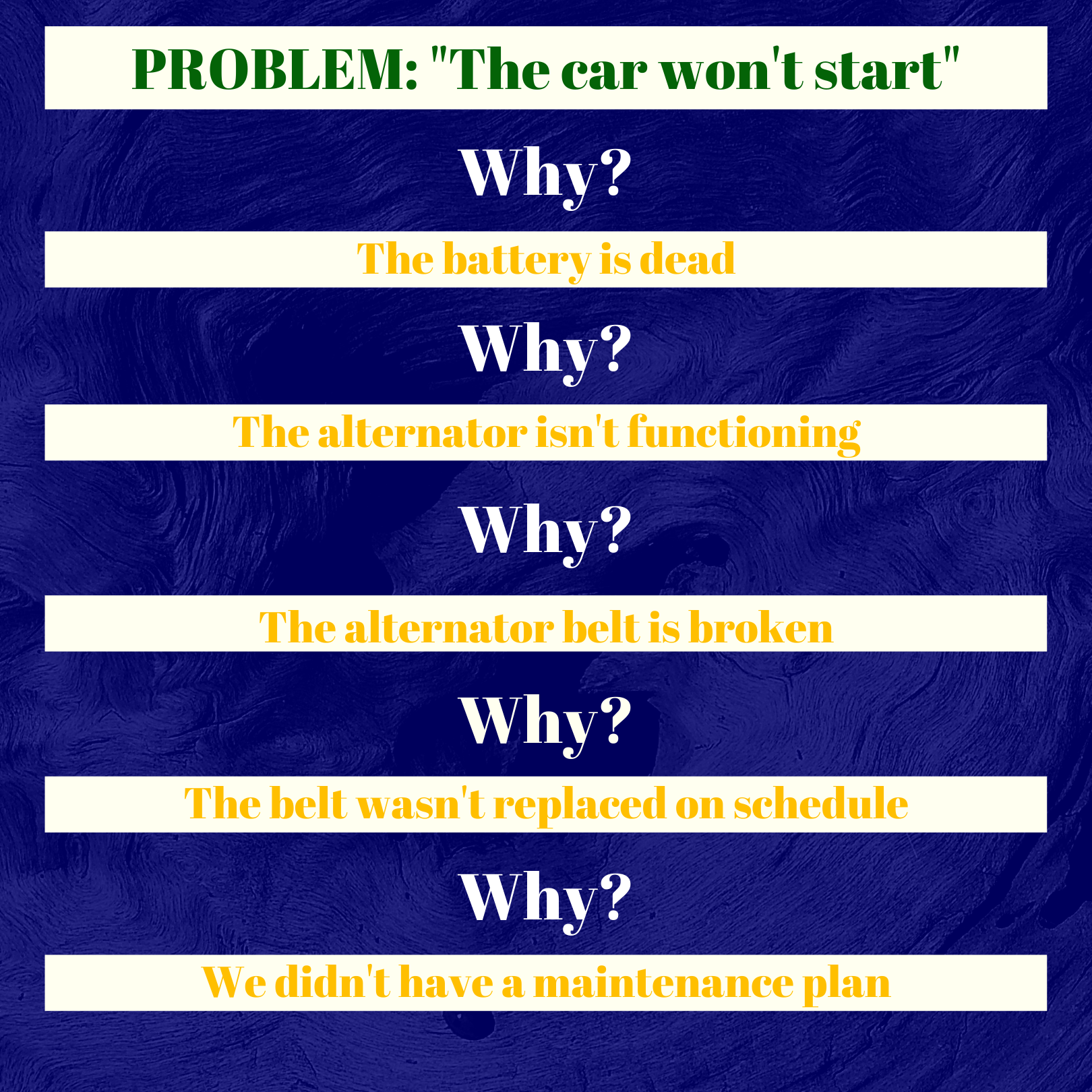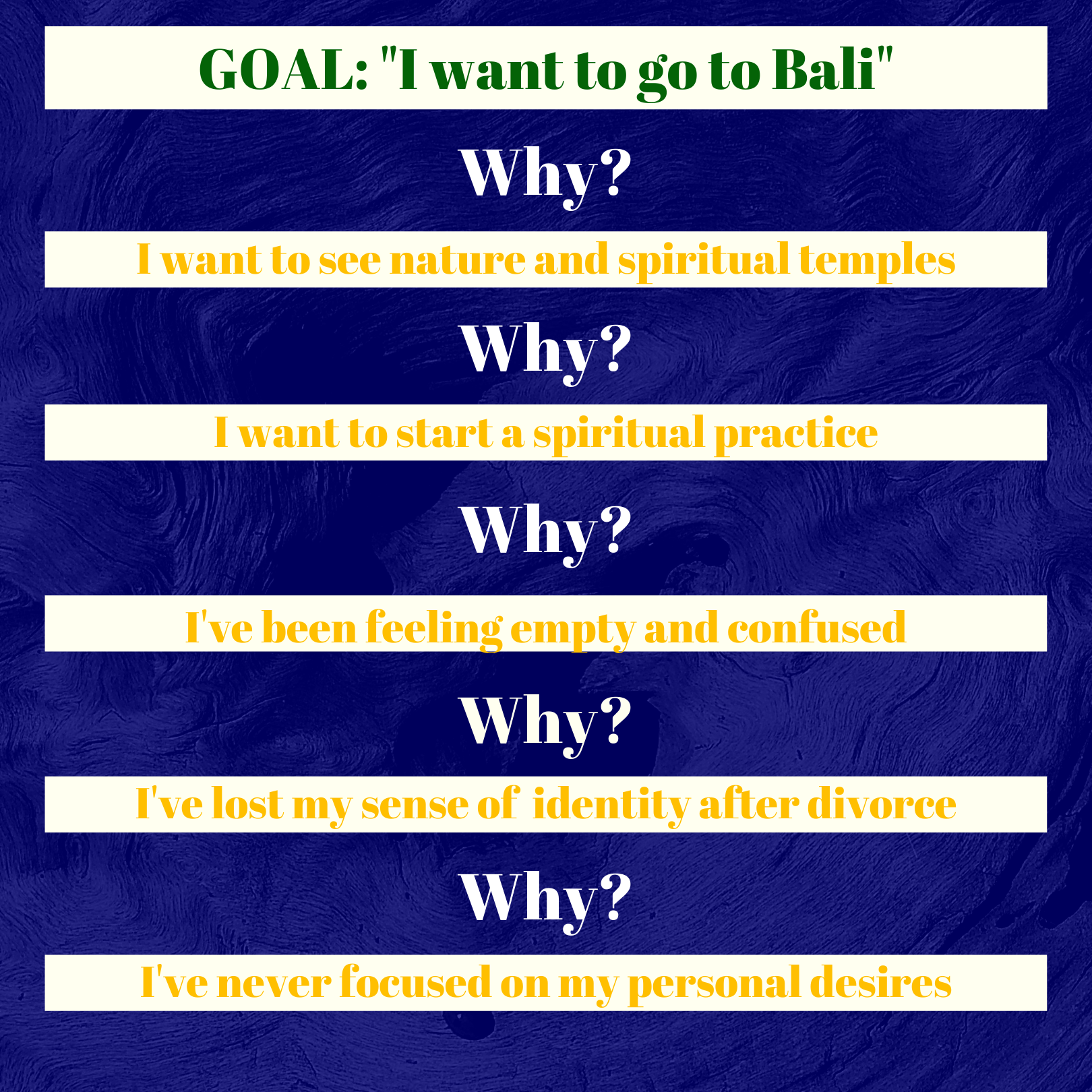Have you ever heard of root cause analysis?
If you work in manufacturing – or perhaps in project management for any sector – you’re probably familiar with the concept. According to the American Society for Quality, one of the world’s leading professional organizations for quality management, “Root cause analysis (RCA) is defined as a collective term that describes a wide range of approaches, tools, and techniques used to uncover causes of problems.”
One of the most popular RCA techniques is the 5 Whys exercise. Simple but surprisingly effective, this technique was developed by Sakichi Toyoda (inventor and founder of Toyota Industries) to improve production quality and efficiency.
The exercise is straightforward: you begin by identifying a problem, then you ask “why?” five times in order to find the source or root cause of the problem.
Here’s an automotive example:

The exercise works because, in many cases, the surface-level, obvious-to-see problem is just a symptom of a deeper cause. While many people might pursue a convenient “quick fix” at the surface level, this ultimately would be just a waste of resources and efforts that could be used to solve the real problem once and for all.
For instance, in the above example, if all you did was identify that the car didn’t start because the battery was dead, you could rush out and get a new battery….and find a few weeks and months later that you’d have the same problem recurring again and again. By asking “Why?” five times, you could drill down to reach a solution (creating a maintenance plan) that would solve the issue for good.
Root Cause Travel
Now, you might likely be wondering, “what does this manufacturing technique have to do with travel?”
Interestingly, in my work as a Life and Travel Coach, I’ve found this exercise can be especially useful in helping clients to breakthrough obstacles that are holding them back. Plus, at an even deeper level, it can help clients penetrate down and clarify their “big why” – and this kind of clarity is invaluable for real transformation.
(In fact, I believe travel is potentially one of the most powerful means of learning and self-development, and this tool can help promote a truly transformational travel experience)
On one level, there are potential problems that could be keeping a client from pursuing a transformative travel journey. For example, for a client with what on the surface was a budget problem, we could drill down and discover that at the root was an issue about priorities, which could be addressed and changed.
While the 5 Whys tool is traditionally about “problem-solving,” I find it can be even more valuable as a tool for “intention setting.” Although it’s still about the “root cause,” this is the difference in philosophy between efficient causation and final causation.
In a nutshell, the efficient cause is “the primary source of the change” – for example, if you ask “why is there a house?” the efficient cause would be the construction crew that built it. They are the cause responsible for physically bringing the house into existence. On the other hand, the final cause is “the end, that for the sake of which a thing is done” – in the example of the house, the final cause would be the desire of the family who wanted to live there.
Final causation points to the ultimate end or goal – when it comes to travel, this is the deep purpose your journey can fulfill.
Here’s an example of the 5 Whys exercise as applied to travel goal setting:

In this example, the client realizes that the desire to go to Bali is not merely to experience nature or participate in spiritual rituals as ends in themselves. Instead, the deep reason to travel is to finally get in touch with the deep authentic desires that had been neglected during an unhappy marriage.
Why Are You Traveling?
It’s important to note that, like any tool, the 5 Whys exercise has its limitations and potential problems – however, while it may not be a be-all-end-all technique (but hey, what is?), I’ve found it can be a useful tool in the toolkit to cut through layers of emotion and motivation, ultimately resulting in more meaningful travel.
If you’ve used the 5 Whys technique for more intentional travel, I’d love to hear about your experience with it (both positives and any negative feedback we could learn from)!


